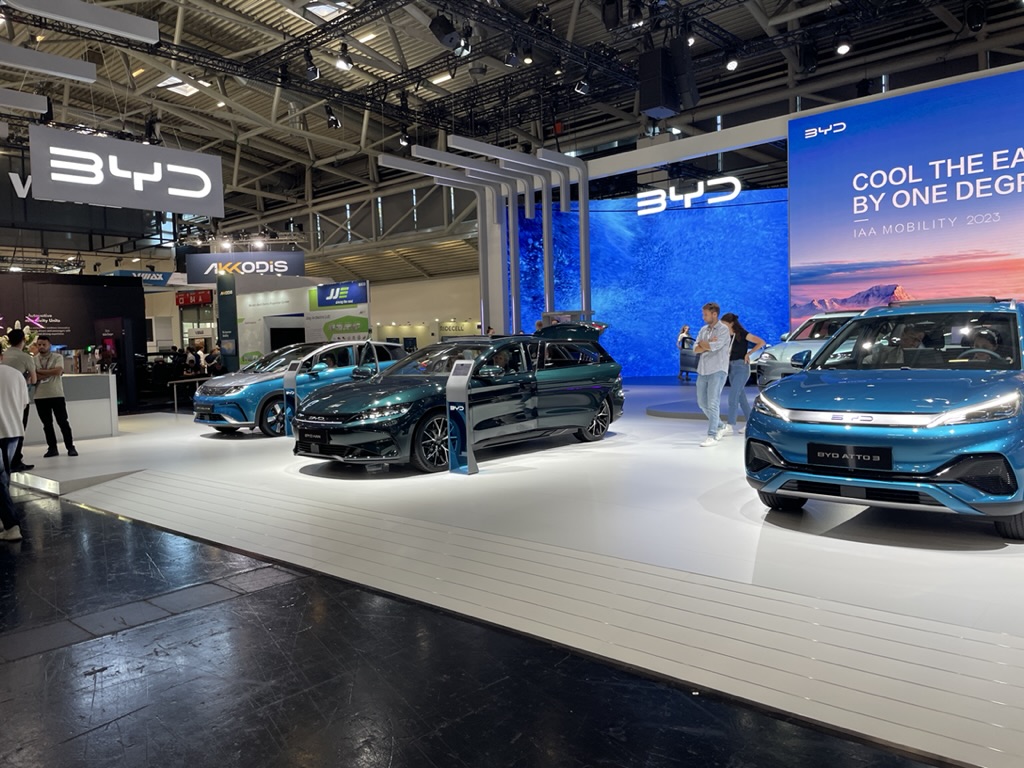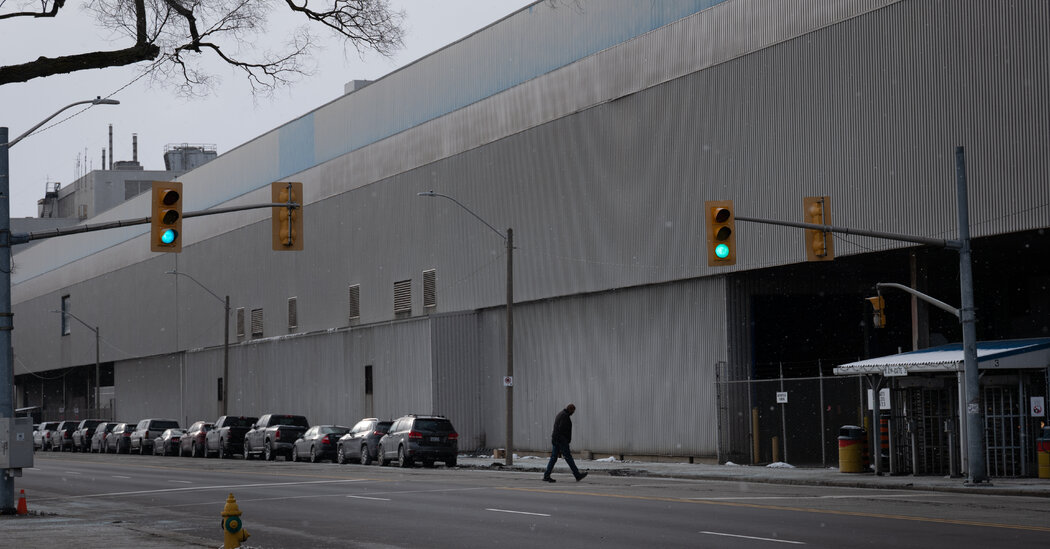EV Mandates Face Renewed Opposition From Car Dealerships

Table of Contents
Financial Concerns and Investment Hurdles
Dealerships are expressing serious reservations about the substantial financial burden associated with complying with EV mandates. The high upfront costs and uncertainty surrounding consumer demand are major obstacles.
High Upfront Costs of EV Infrastructure
Implementing the necessary infrastructure for EV sales and service represents a significant financial challenge for dealerships. This includes substantial investments in several key areas:
- Cost of installing Level 2 and DC fast chargers: Installing charging stations, particularly DC fast chargers, requires considerable capital investment, potentially running into tens of thousands of dollars per station. This cost is compounded by the need for electrical grid upgrades in many locations.
- Specialized training for technicians on EV batteries and electric motors: EVs require specialized knowledge and tools for maintenance and repair. Training technicians to work on high-voltage systems and complex battery technologies is expensive and time-consuming.
- Need for significant showroom space redesign to accommodate EV displays: Showrooms may need renovations to properly display and showcase EVs, potentially requiring significant investment in new display units and floor space modifications.
Uncertainty Surrounding Consumer Demand and Return on Investment (ROI)
Dealerships are hesitant to invest heavily in EV infrastructure without assurance of sufficient consumer demand. Several factors contribute to this uncertainty:
- Concerns about limited consumer affordability: The higher purchase price of many EVs compared to gasoline-powered vehicles remains a barrier for many consumers.
- Lack of widespread public charging infrastructure outside of dealership locations: The limited availability of public charging stations outside of urban areas creates range anxiety for potential EV buyers, hindering adoption.
- Uncertainty regarding future government incentives and regulations: Changes in government policies and incentives can significantly impact consumer demand and the profitability of EV investments for dealerships.
Challenges in Sales and Service
Beyond financial concerns, dealerships face practical challenges in selling and servicing EVs effectively.
Lack of EV Technician Expertise
A critical bottleneck in the EV transition is the shortage of qualified technicians capable of servicing EVs. This poses a significant challenge for dealerships:
- Difficulty recruiting and retaining qualified EV technicians: The demand for EV technicians far outstrips the supply, leading to intense competition for skilled workers and potentially higher labor costs.
- Need for extensive training programs to bridge the skills gap: Investing in comprehensive training programs for existing technicians is crucial but requires substantial financial resources and time.
- Potential for longer repair times and higher service costs: The complexity of EV technology can lead to longer repair times and increased service costs, impacting customer satisfaction and potentially reducing service revenue.
Inventory Management and Supply Chain Issues
The current volatile supply chain and complexities of EV production add further challenges for dealerships:
- Limited EV model availability from manufacturers: Manufacturers often struggle to meet demand, leading to limited inventory and long wait times for customers.
- Long lead times for EV orders: Ordering EVs can take considerably longer than ordering gasoline-powered vehicles, affecting sales cycles and customer expectations.
- Difficulties in forecasting EV sales due to market volatility: The rapidly evolving EV market makes it challenging for dealerships to accurately predict future sales and manage inventory levels effectively.
Concerns about Consumer Readiness
Dealerships also highlight crucial concerns about consumer preparedness for widespread EV adoption.
Range Anxiety and Charging Infrastructure Deficiencies
Range anxiety remains a major concern for potential EV buyers. This is directly linked to the inadequate public charging infrastructure:
- Need for significantly expanded public charging networks: A substantial increase in the number and geographic distribution of public charging stations is necessary to alleviate range anxiety.
- Addressing consumer concerns about charging time and convenience: Faster charging technologies and improved charging infrastructure are crucial to make EVs more convenient and appealing to consumers.
- Highlighting advancements in battery technology and range: Educating consumers about improvements in battery technology and the increasing range of EVs is important to build consumer confidence.
Affordability and Purchase Incentives
The higher initial cost of EVs compared to internal combustion engine (ICE) vehicles is a significant obstacle:
- Importance of tax credits and rebates to reduce EV costs: Government incentives are crucial in making EVs more affordable and accessible to a wider range of consumers.
- Exploring innovative financing options to make EVs more affordable: Creative financing solutions, such as longer loan terms or lease options, can help reduce the monthly payments for EV buyers.
- Addressing consumer perceptions about EV affordability: Clear and accurate information about the total cost of ownership of EVs, including factors like lower fuel and maintenance costs, can help change consumer perceptions.
Conclusion
The opposition to EV mandates from car dealerships highlights serious concerns regarding financial viability, infrastructure preparedness, and consumer readiness. While the transition to electric vehicles is crucial for environmental sustainability, a collaborative approach is paramount. Addressing dealership concerns through realistic timelines, sufficient financial support, and comprehensive consumer education initiatives is vital for a successful and equitable transition to widespread EV adoption. Ignoring these challenges risks undermining the ultimate goal of accelerating EV adoption. Open dialogue and collaborative solutions are crucial to navigate this complex issue and ensure the success of future EV mandates. Let's work together to find solutions that support both the environment and the automotive industry.

Featured Posts
-
 Patrick Schwarzeneggers Unseen Ariana Grande Music Video Appearance A White Lotus Connection
Apr 27, 2025
Patrick Schwarzeneggers Unseen Ariana Grande Music Video Appearance A White Lotus Connection
Apr 27, 2025 -
 Indian Wells Una Favorita Cae En La Gran Campanada Del Torneo
Apr 27, 2025
Indian Wells Una Favorita Cae En La Gran Campanada Del Torneo
Apr 27, 2025 -
 Trumps Tariff Threat Inevitable Job Losses In Canadas Auto Industry
Apr 27, 2025
Trumps Tariff Threat Inevitable Job Losses In Canadas Auto Industry
Apr 27, 2025 -
 Pne Ag Veroeffentlichung Gemaess Artikel 40 Absatz 1 Wp Hg
Apr 27, 2025
Pne Ag Veroeffentlichung Gemaess Artikel 40 Absatz 1 Wp Hg
Apr 27, 2025 -
 Belinda Bencics Post Maternity Wta Victory
Apr 27, 2025
Belinda Bencics Post Maternity Wta Victory
Apr 27, 2025
Latest Posts
-
 The Professionals Behind Ariana Grandes Stunning Hair And Tattoo Makeover
Apr 27, 2025
The Professionals Behind Ariana Grandes Stunning Hair And Tattoo Makeover
Apr 27, 2025 -
 Ariana Grandes Bold New Look The Importance Of Professional Guidance
Apr 27, 2025
Ariana Grandes Bold New Look The Importance Of Professional Guidance
Apr 27, 2025 -
 Celebrity Style Ariana Grandes New Look And The Professionals Behind It
Apr 27, 2025
Celebrity Style Ariana Grandes New Look And The Professionals Behind It
Apr 27, 2025 -
 Professional Hair And Tattoo Artists Inspired By Ariana Grandes Transformation
Apr 27, 2025
Professional Hair And Tattoo Artists Inspired By Ariana Grandes Transformation
Apr 27, 2025 -
 Ariana Grandes Style Evolution Hair Tattoos And Professional Image Consulting
Apr 27, 2025
Ariana Grandes Style Evolution Hair Tattoos And Professional Image Consulting
Apr 27, 2025
